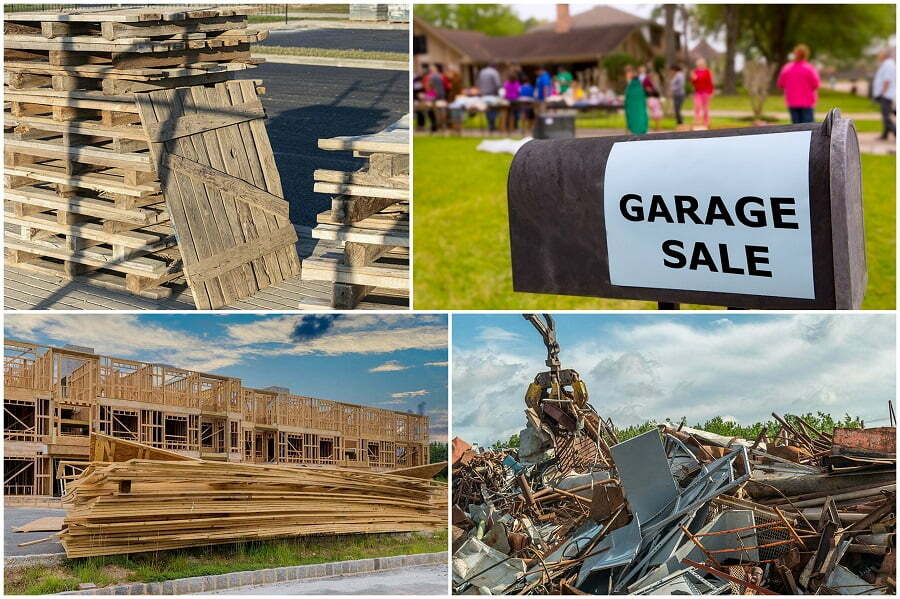Last updated on
This article offers practical, effective solutions for schools to incorporate recycling practices into their routines, promoting environmental consciousness among students.
Run a Recycled Art Exhibition
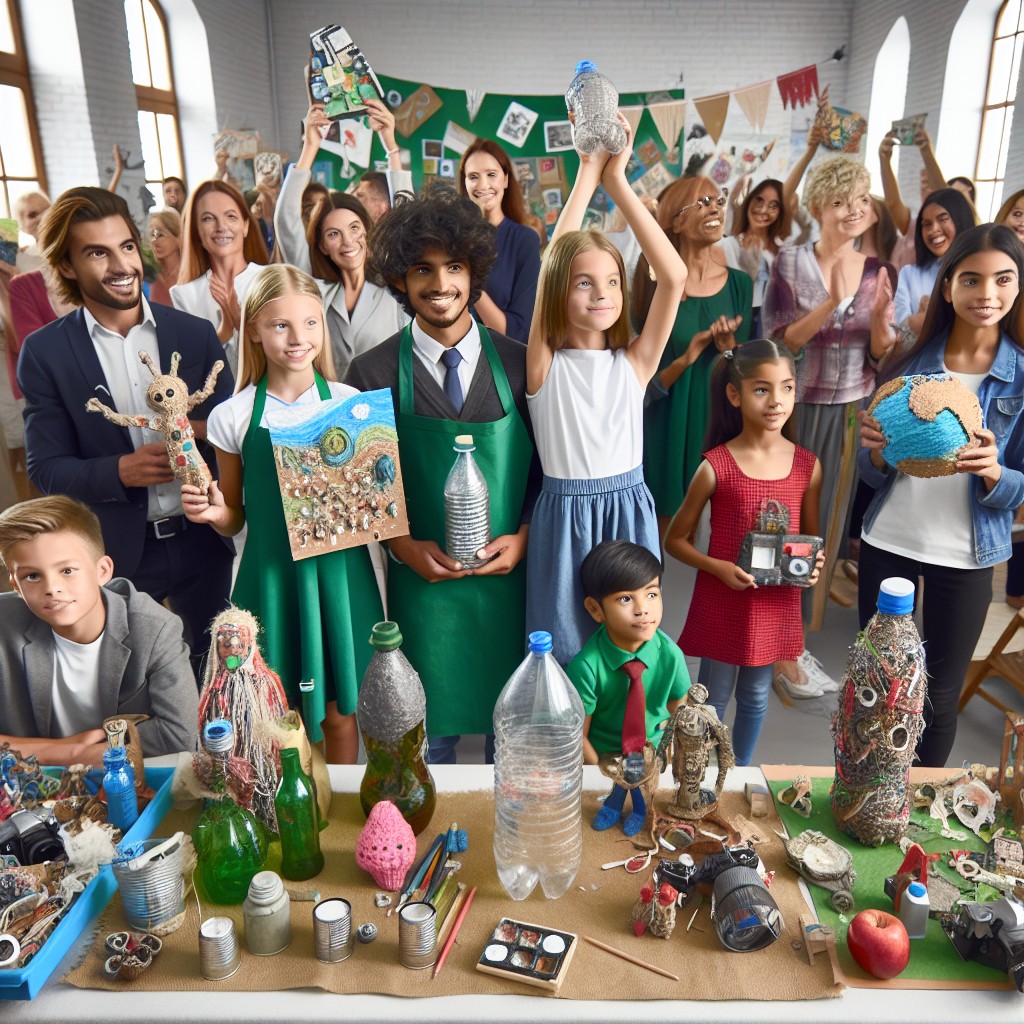
Students harness creativity by crafting artwork from discarded materials, which are then showcased in a school-wide exhibition. This event not only engages the school community but also educates participants about the value of reusing resources in artistic ways.
Such a display serves as a hands-on learning experience, demonstrating the potential of recyclable materials beyond their initial purpose.
Develop a Composting Program for Lunch Scraps
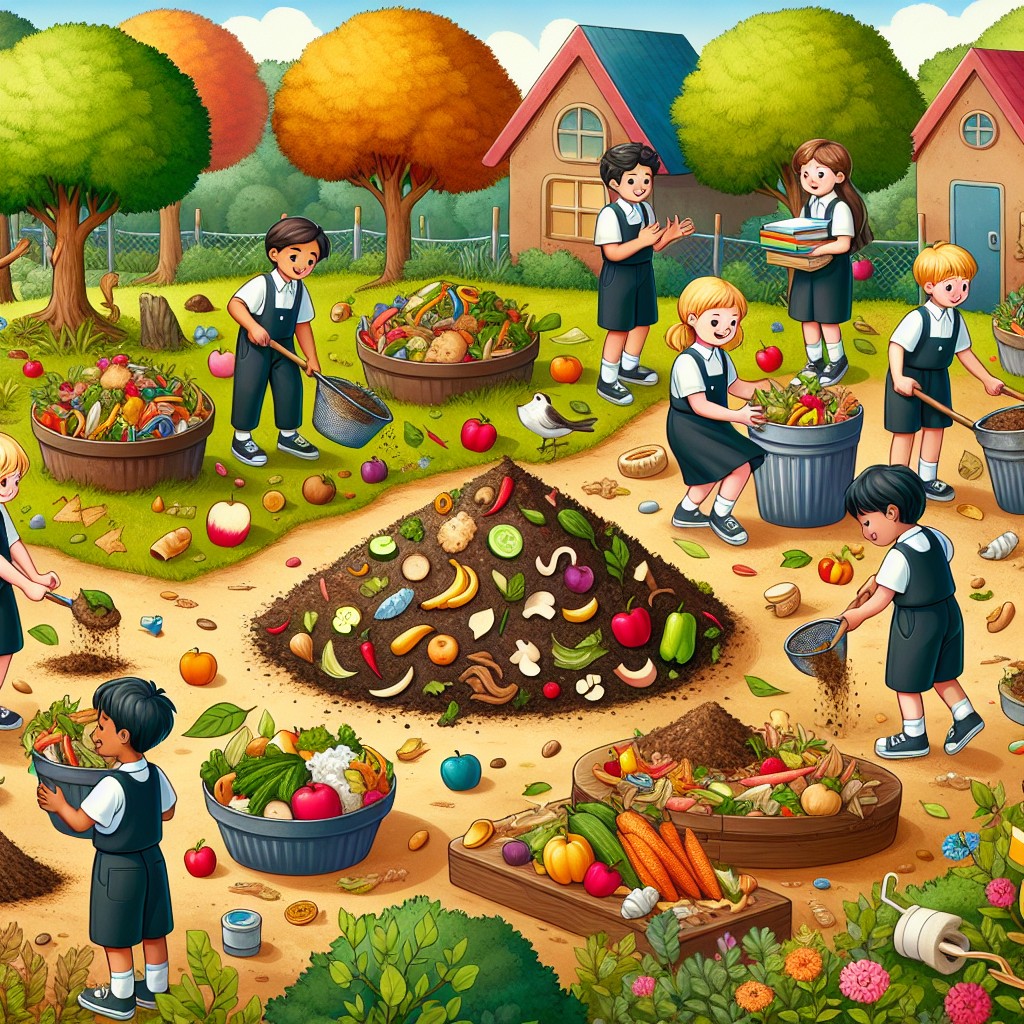
A composting program enables students to recycle organic waste from their meals, turning leftovers into nutrient-rich soil. Through participation, they learn valuable lessons about waste reduction and the cycle of natural resources.
The initiative not only aids in lowering the school’s ecological footprint but also serves as a practical, hands-on science lesson for students.
Create Recycled Musical Instruments

Students transform discarded items into functional instruments, cultivating ingenuity and sustainability awareness.
This initiative not only teaches the principles of sound and music but also underscores the value of repurposing everyday objects.
Through performances and showcases, these unique creations foster school spirit and community engagement around recycling.
Organize a Recyclable Material Fashion Show

Students design and model outfits crafted from recycled materials, fostering creativity and resourcefulness. This event educates attendees on the versatility of repurposed items, challenging perceptions of waste.
The fashion show serves as a platform to celebrate environmental stewardship within the school community.
Build a Green Wall or Eco-bricks Project

Students can contribute by collecting single-use plastics, which are then compacted into bottles to form eco-bricks. These bricks serve as sustainable building blocks for constructing a vertical garden, fostering both creativity and environmental awareness.
Engaging students in creating and maintaining the wall educates them on the value of upcycling and ecosystem interactions.
Host a Junk-to-treasure Fair

Students collect discarded items and transform them into crafts or useful objects, showcasing their ingenuity and resourcefulness.
The fair promotes environmental awareness by demonstrating the potential of upcycling waste materials into valuable products.
The school community is invited to participate in the fair, fostering a collaborative effort to reduce waste and encourage sustainable practices.
Make a Recycled School Mascot
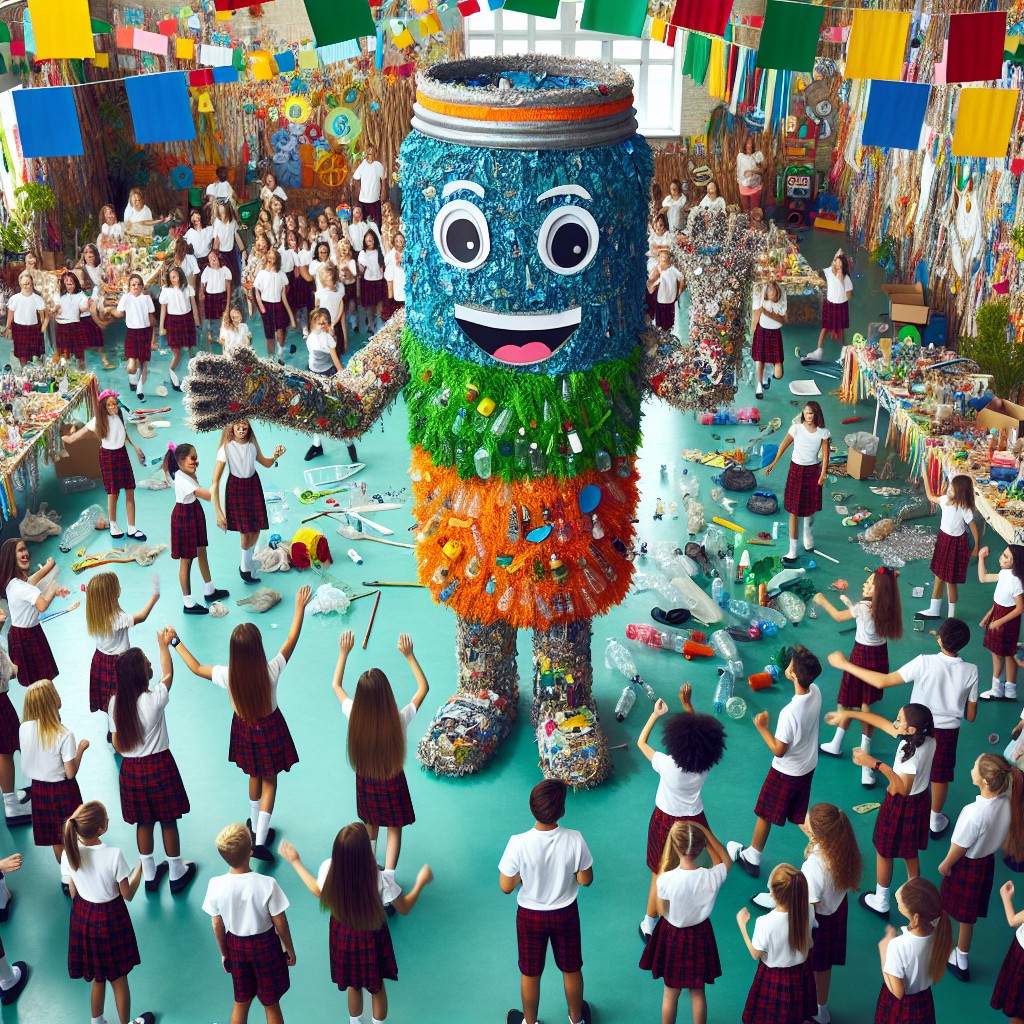
Utilizing discarded materials, students collaborate to construct a symbol of school spirit representing their commitment to sustainability. This mascot serves both as a creative centerpiece for sports events and a tangible reminder of the importance of recycling.
Through this initiative, the school community engages in a hands-on experience, reinforcing environmental values in a fun, collective project.
Organize a Recycled Sculpture Contest
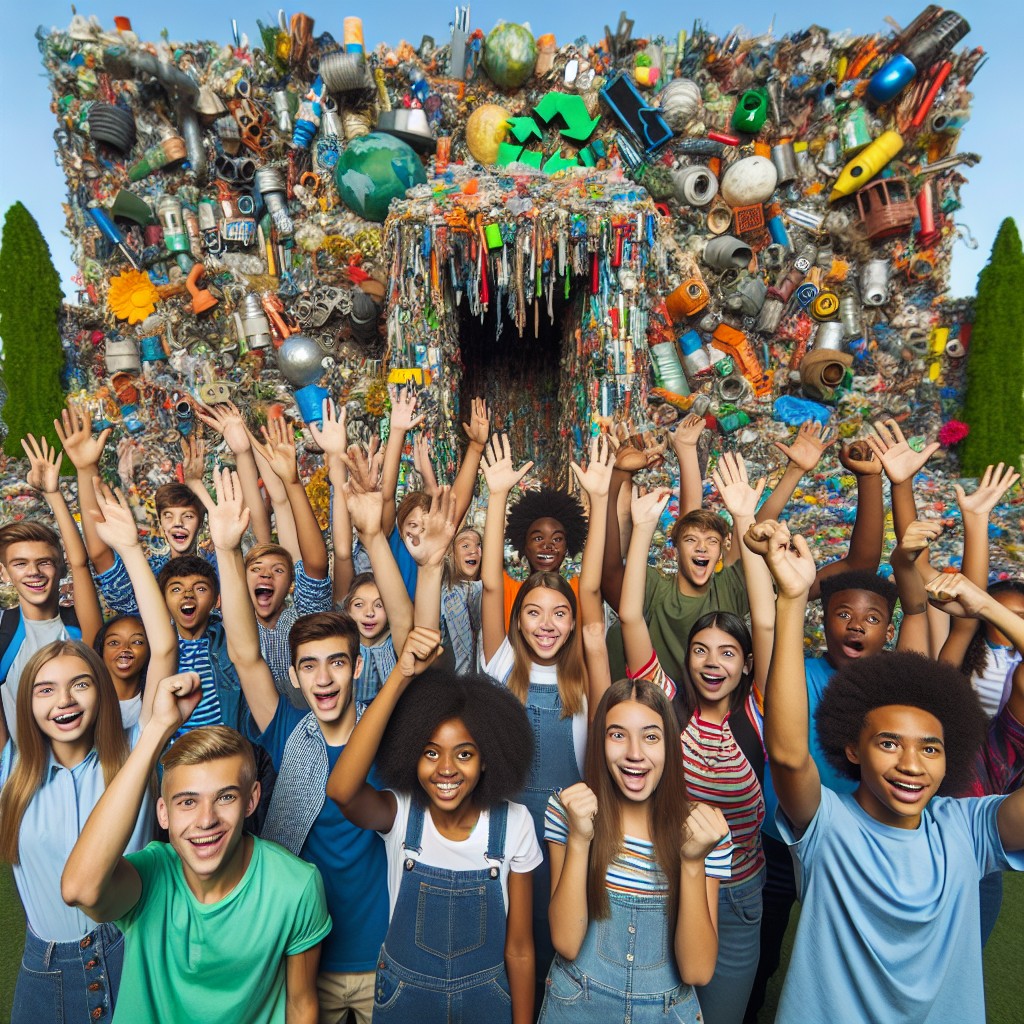
A recycled sculpture contest challenges students to create artwork solely from discarded materials, fostering creativity while emphasizing sustainability.
This initiative serves as a practical exercise in resourcefulness, showing the value of repurposing waste.
The contest can simultaneously beautify the school environment and raise awareness about the volume and potential of recyclable waste.
Set Up a Paperless Day Once a Week

Every week, students and educators commit to using electronic resources, eliminating the need for printed handouts and worksheets. This practice not only reduces waste but also familiarizes the school community with digital tools for education.
By reducing paper consumption, the school contributes significantly to conserving trees and lowering carbon emissions associated with paper production.
Introduce an Eco-suggestions Box
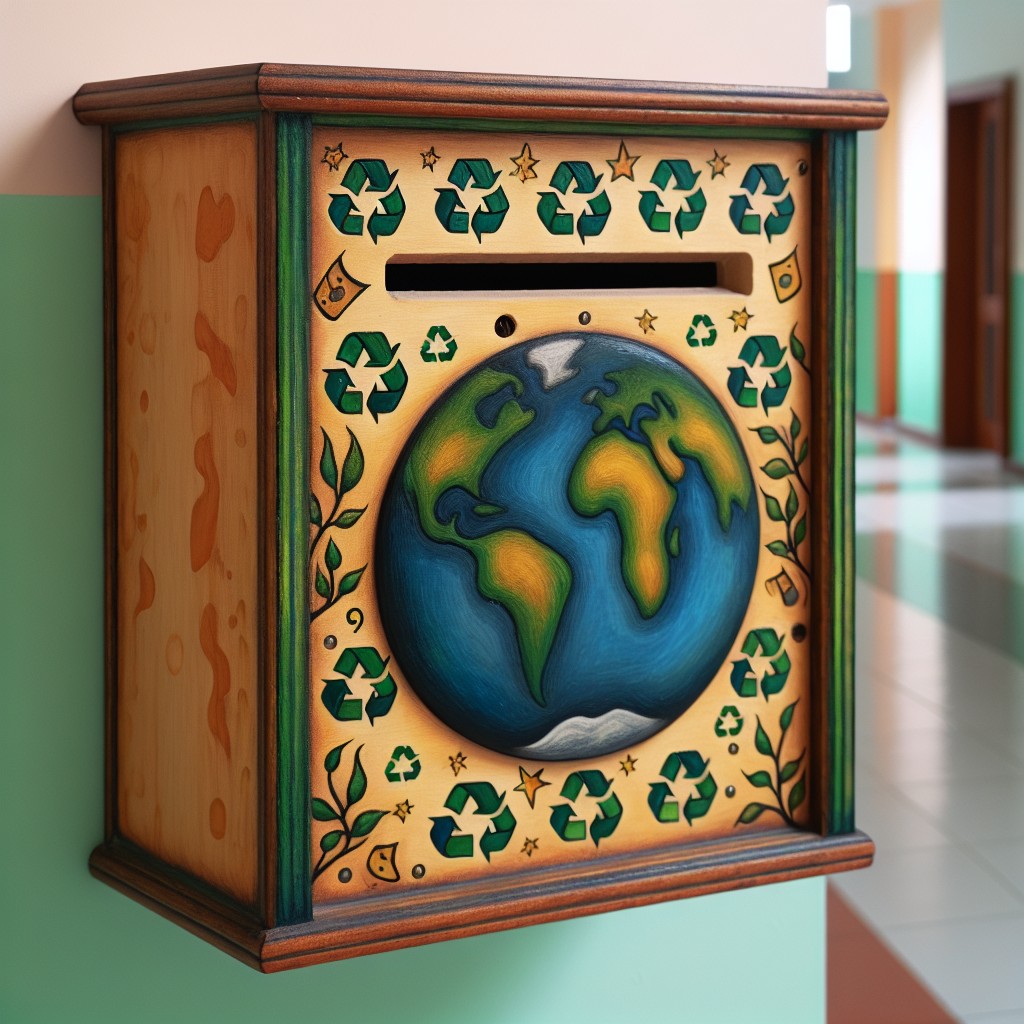
An eco-suggestions box encourages students and staff to contribute innovative recycling and sustainability ideas. It fosters a collaborative environment where the entire school community can participate in green initiatives.
Regularly reviewed, the suggestions lead to actionable projects that enhance the school’s eco-friendly practices.
Develop an Eco-movie Screening With Recycled Popcorn Boxes
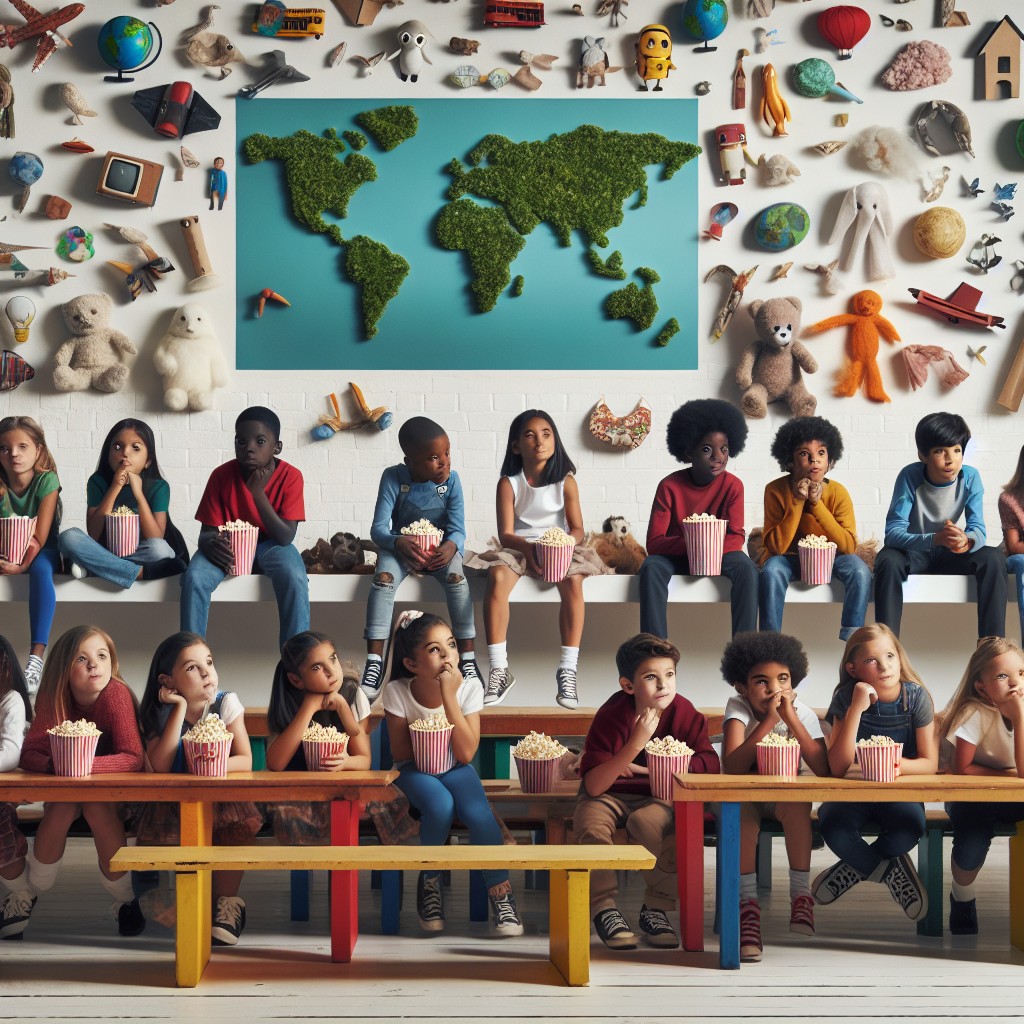
Students can gather and watch documentaries on environmental conservation, using projectors powered by renewable energy sources.
Popcorn can be served in boxes made from previously collected and crafted recycled paper materials.
This event serves both as an educational platform and a practical demonstration of reusing resources to reduce waste.
Plant Trees in Recycled Milk Cartons
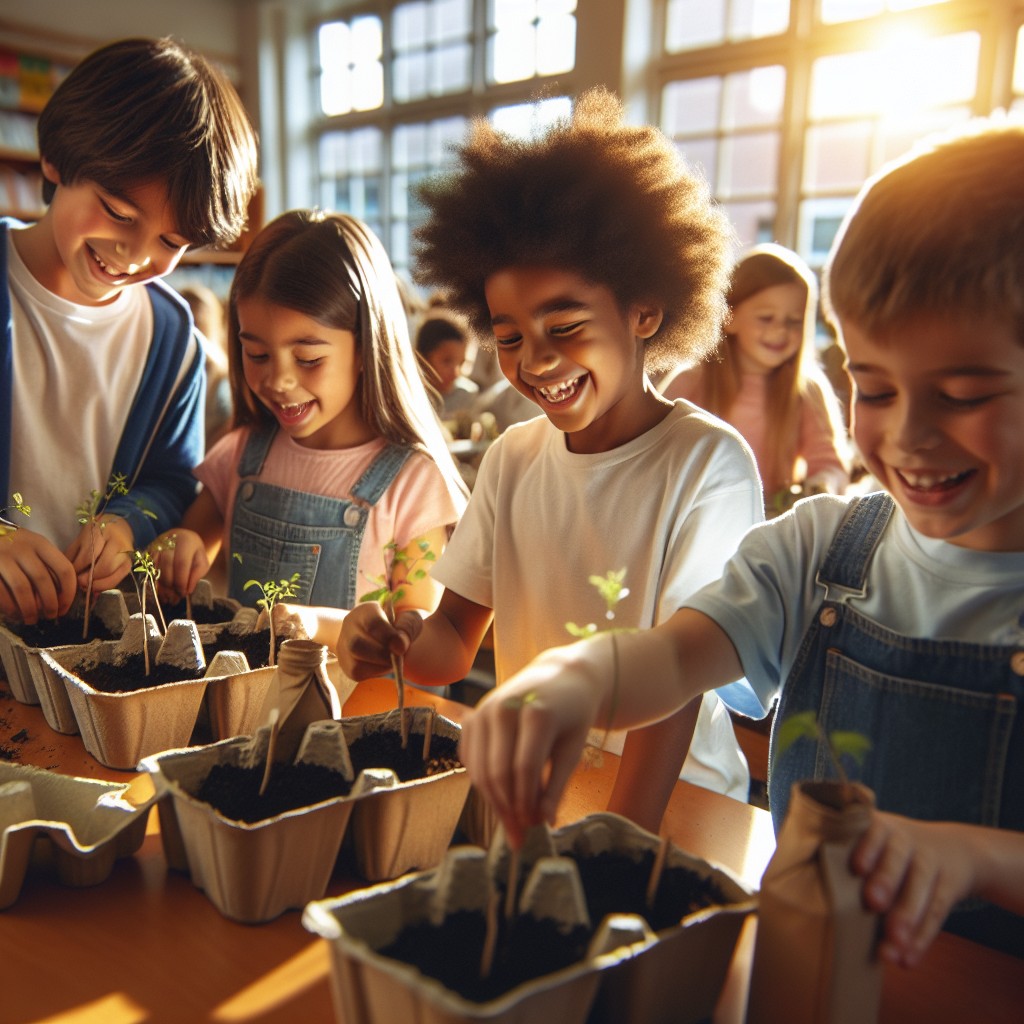
Repurposed milk cartons serve as eco-friendly pots for young saplings, engaging students in hands-on horticulture.
This initiative transforms single-use containers into valuable tools for teaching environmental stewardship and sustainability.
Through planting, students actively participate in the life cycle of plants and contribute to the greening of their school grounds.
Make Recycled Paper Jewelry
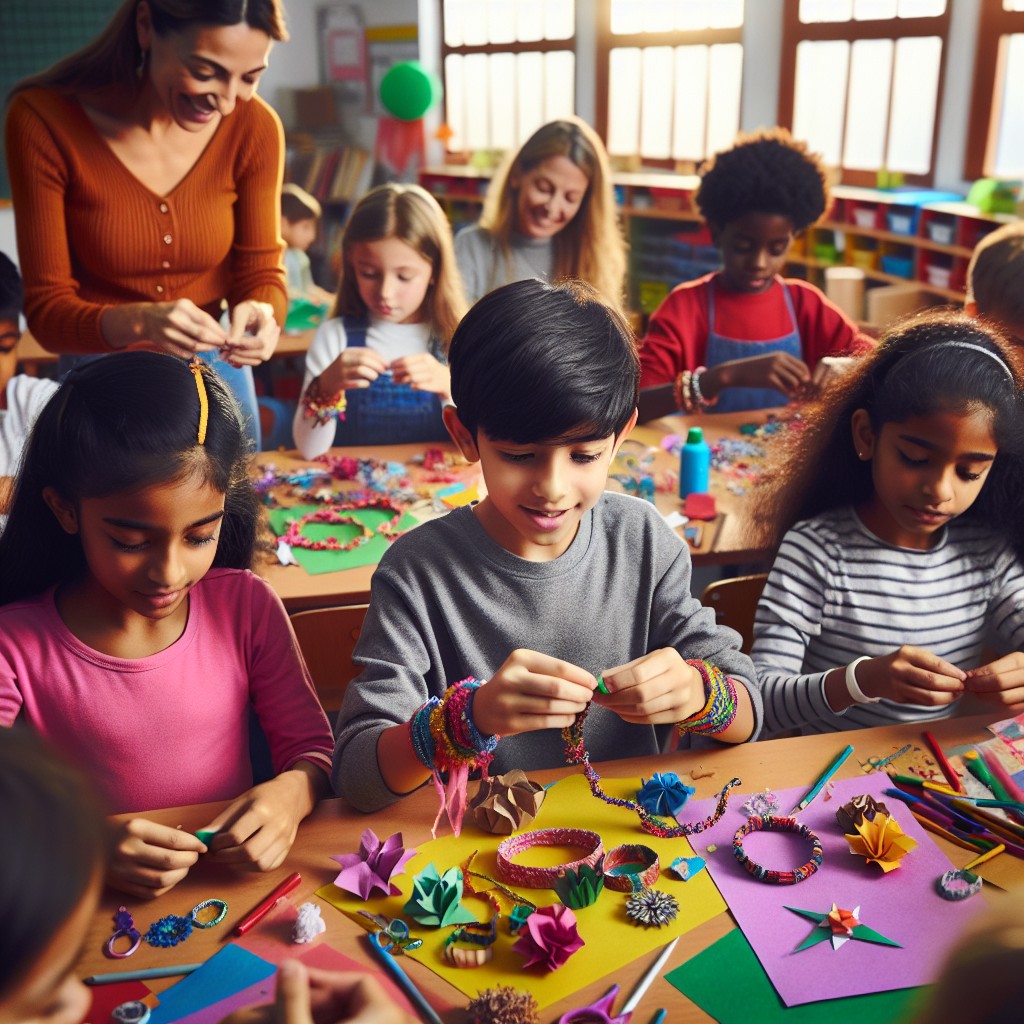
Crafting jewelry from recycled paper offers a hands-on learning experience about the value of materials usually discarded. Students exercise creativity by transforming old newspapers, magazines, and paper scraps into bracelets, necklaces, and earrings. This activity not only beautifies waste but also instills a sense of environmental responsibility and resourcefulness in young minds.
Use Recycled Materials to Create School Stationery

Crafting school stationery from recycled items transforms waste into practical tools, enhancing environmental education.
Notebooks from reclaimed paper or pencil cases sewn from old fabrics exemplify how everyday objects can have a second, valuable life.
This initiative not only reduces waste but also fuels creativity and resourcefulness among students.
Organize a Flash Mob Promoting Recycling
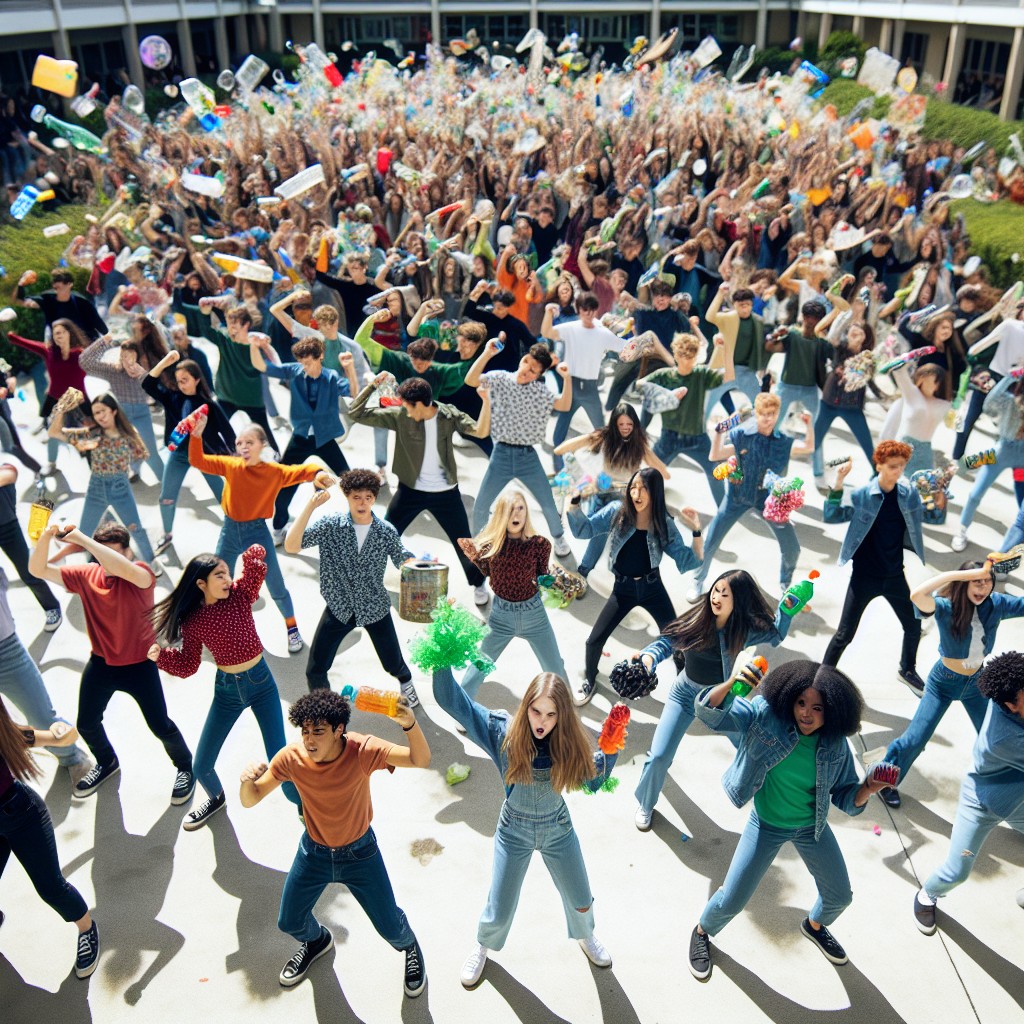
A flash mob combines performance and activism, engaging students in a choreographed dance or action that highlights the importance of recycling. This public demonstration can captivate a school audience or a broader community, spreading awareness about sustainable practices through memorable visual impact.
The mob serves as a creative platform for students to express their support for recycling, potentially inspiring onlookers to make positive environmental changes.
Ideas Elsewhere
- https://www.weareteachers.com/21-ideas-big-and-small-to-bring-recycling-into-the-classroom/
- https://cleanriver.com/resource/recycling-projects-kids-schools/
- https://www.teachstarter.com/us/blog/10-nifty-ways-encourage-recycling-classroom-us/
- https://www.reusethisbag.com/articles/guide-to-recycling-at-school
Related reading:
Table of Contents


